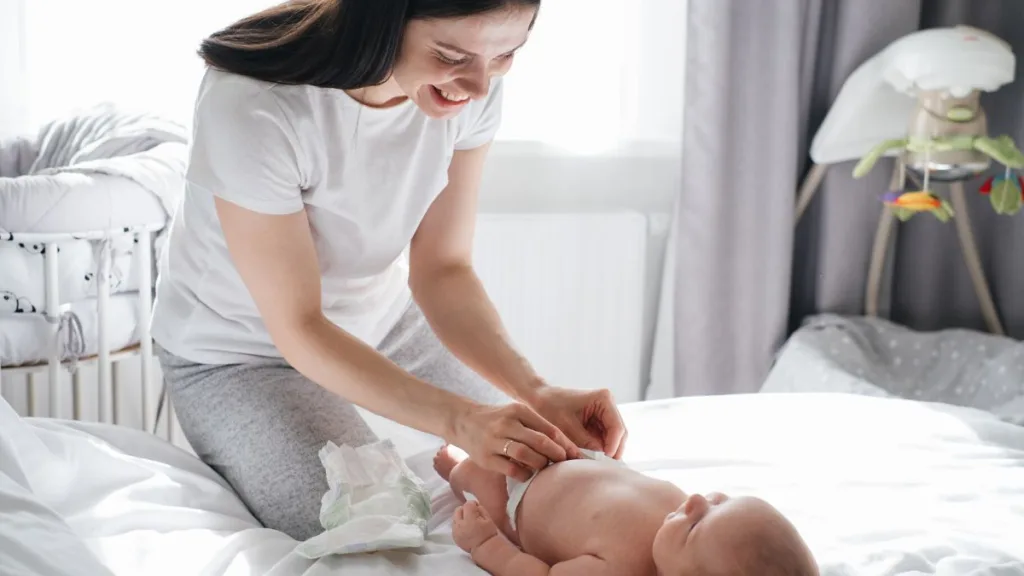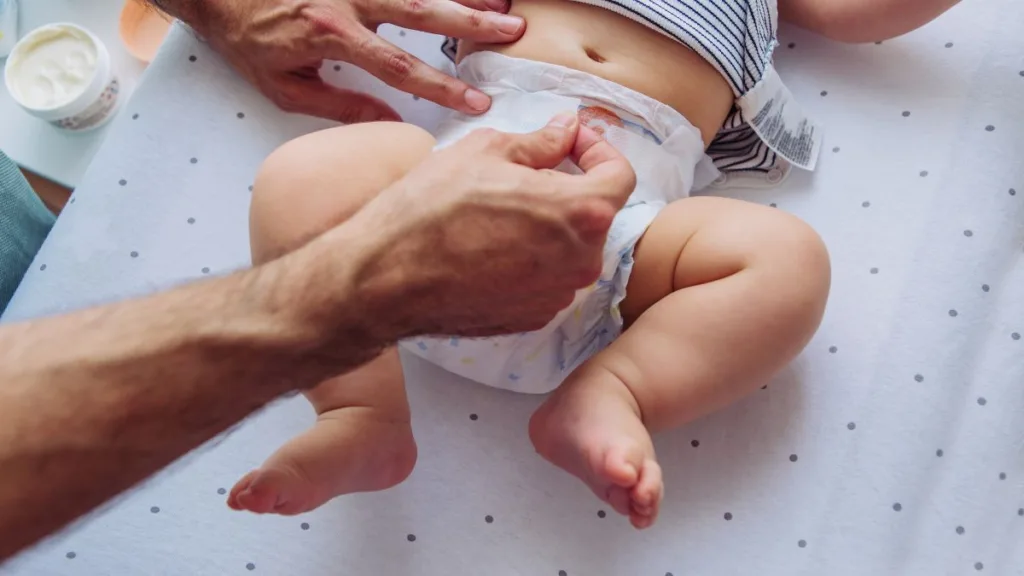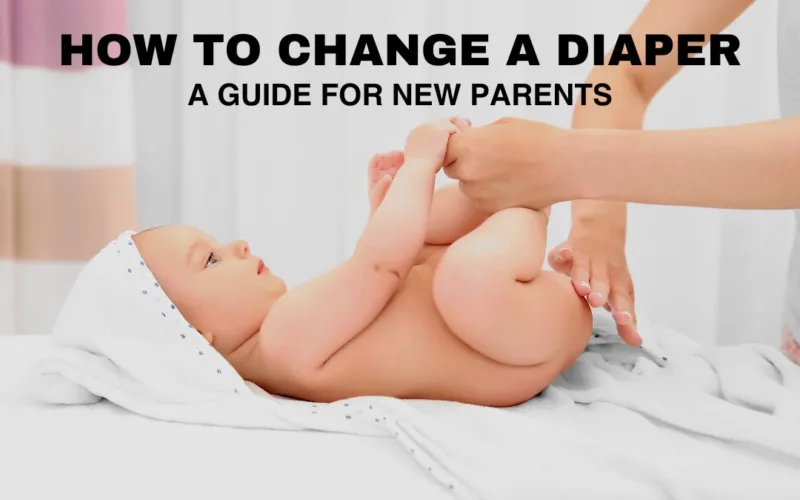Are you a new parent or caregiver who’s unsure of how to change a diaper? Don’t worry, you’re not alone. As a new parent, one of the most important tasks you’ll need to master is changing your baby’s diaper. It’s a skill that takes practice, but with the right techniques and a little bit of patience, you’ll soon become a pro. In this article, we’ll cover everything you need to know about changing a diaper, from the proper steps to take to how often to change a newborn’s diaper.
How to Properly Change a Diaper
Step 1: Gather Your Supplies
Before you start changing your baby’s diaper, make sure you have all the supplies you’ll need within arm’s reach. This includes a clean diaper, wipes, diaper rash cream (if necessary), and a changing pad. It’s also a good idea to have a plastic bag nearby to dispose of the dirty diaper.
Step 2: Prepare Your Changing Area
Choose a flat, stable surface to change your baby’s diaper on, such as a changing table or a bed. If you’re using a changing table, make sure it has safety straps to keep your baby secure. Place a changing pad or towel on the surface to keep it clean.

Step 3: Remove Your Baby’s Clothes
Unbutton or unzip your baby’s outfit and gently slide it off, taking care not to disturb the dirty diaper. If your baby has had a blowout, you may need to remove the outfit entirely to avoid getting poop on it.
Step 4: Open the Diaper
Unfasten the tabs on the dirty diaper and gently lift your baby’s legs by the ankles, using one hand to hold them up and the other hand to slide the diaper out from underneath your baby.
Step 5: Clean Your Baby’s Bottom
Using wipes or a wet washcloth, gently clean your baby’s bottom, being sure to wipe from front to back to avoid spreading bacteria. If your baby has a diaper rash, apply diaper rash cream to the affected area.
Step 6: Put on a Fresh Diaper
Slide a clean diaper under your baby, making sure it’s snug but not too tight around the waist. Bring the front of the diaper up between your baby’s legs and fasten the tabs on both sides.
Step 7: Dress Your Baby
Slide your baby’s outfit back on, making sure it’s buttoned or zipped all the way up. If your baby is wearing a onesie, make sure the snaps are securely fastened.
Step 8: Dispose of the Dirty Diaper
Wrap the dirty diaper up tightly and place it in a plastic bag, tying the bag securely before disposing of it in the trash.

How Often to Change a Newborn’s Diaper
Newborns require frequent diaper changes, as they have very sensitive skin and are prone to diaper rash. As a general rule, you should change your baby’s diaper every two to three hours, or as soon as you notice it’s wet or soiled. You may need to change your baby’s diaper more frequently if they have diarrhea or are prone to skin irritation.
It’s also important to change your baby’s diaper before and after feedings, as well as before bedtime. A fresh diaper can help your baby feel more comfortable and prevent diaper leaks that can disrupt their sleep.
Other Important Instructions for Parents
In addition to the steps outlined above, there are a few other important instructions for parents to keep in mind when changing their baby’s diaper:
- Always wash your hands before and after changing a diaper to prevent the spread of germs.
- Make sure the diaper fits properly, with no gaps around the legs or waist that can cause leaks.
- If your baby has a diaper rash, use a diaper cream that is safe for the skin and apply it generously to the affected area. You may also want to give your baby some diaper-free time to allow their skin to breathe and heal.
- Be gentle when cleaning your baby’s bottom, using a soft touch and avoiding rubbing or scrubbing. Harsh wiping can irritate your baby’s delicate skin and cause diaper rash.
- Always supervise your baby during diaper changes to ensure their safety. Never leave your baby unattended on a changing table or any elevated surface.
- If you’re using cloth diapers, follow the manufacturer’s instructions for washing and caring for them to keep them clean and hygienic.
- If you notice any signs of diaper rash or skin irritation that don’t improve with diaper cream and diaper-free time, consult your pediatrician for further advice.

Conclusion
In conclusion, changing a diaper may seem overwhelming at first, but with practice and patience, you’ll soon become an expert. Remember to gather your supplies, prepare your changing area, clean your baby’s bottom gently, and dispose of the dirty diaper properly. Change your baby’s diaper every two to three hours, or as soon as you notice it’s wet or soiled, and be sure to follow the other important instructions outlined above to keep your baby clean, comfortable, and healthy.
For more parenting tips and advice, you can read more articles on our website. We always come up with thoroughly detailed articles on various topics. Some of them are listed below for your reference:
- Toy Story: Exploring the Importance of Toys for Children
- 10 Advantages of Reading Aloud to Children
- The Impact of Screen Time on Kids’ Development and 5 tips to Balance it
- 5 Common Benefits of Outdoor Play for Kids and How to Encourage It.
- Top 10 Fun Fitness Games for Children
- How to Clip Baby Nails: A Complete Guide
Frequently Asked Questions
How often should I change my baby’s diaper?
As a general rule, you should change your baby’s diaper every two to three hours, or as soon as you notice it’s wet or soiled. You may need to change your baby’s diaper more frequently if they have diarrhea or are prone to skin irritation.
What supplies do I need to change a diaper?
You will need a clean diaper, wipes, diaper rash cream (if necessary), and a changing pad. It’s also a good idea to have a plastic bag nearby to dispose of the dirty diaper.
How do I prevent diaper leaks?
To prevent diaper leaks, make sure the diaper fits properly, with no gaps around the legs or waist. You may also want to consider using a diaper with extra absorbency if your baby is prone to leaks.
What should I do if my baby has a diaper rash?
If your baby has a diaper rash, use a diaper cream that is safe for the skin and apply it generously to the affected area. You may also want to give your baby some diaper-free time to allow their skin to breathe and heal. If the rash persists or worsens, consult your pediatrician for further advice.
What should I do if my baby has a blowout?
If your baby has a blowout, you may need to remove their outfit entirely to avoid getting poop on it. Use wipes or a wet washcloth to clean your baby’s bottom thoroughly before putting on a fresh diaper.
How can I tell if my baby’s diaper is too tight?
If your baby’s diaper is too tight, you may notice red marks or indentations on the skin where the elastic is digging in. Your baby may also seem uncomfortable and fussy, and the diaper may be more prone to leaks. If you suspect the diaper is too tight, try loosening it slightly around the legs and waist.
Can I use baby powder on my baby’s bottom?
It’s generally not recommended to use baby powder on your baby’s bottom, as it can be harmful if inhaled and can also cause skin irritation. Instead, use diaper cream to protect your baby’s skin and absorb moisture.
What should I do if my baby urinates while I’m changing their diaper?
If your baby urinates while you’re changing their diaper, simply wipe away the urine with a wipe or wet washcloth and put on a fresh diaper. You may want to consider keeping a clean cloth or towel nearby to cover your baby’s bottom while you retrieve a fresh diaper to prevent any messes.
